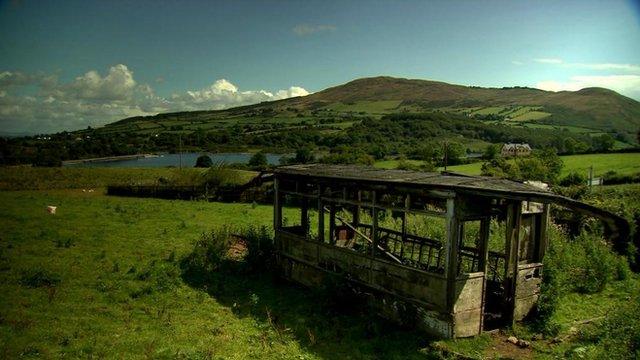Slieve Gullion: Volunteers help repair ancient cairn
- Published
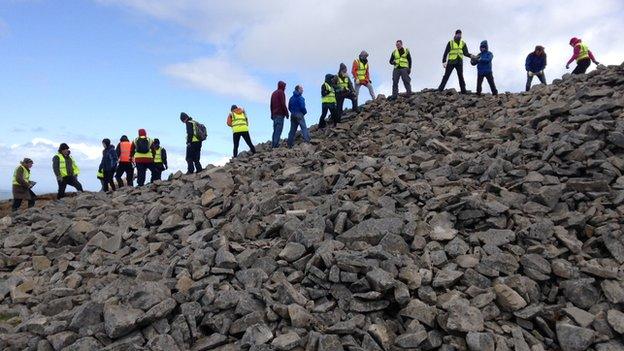
Volunteers climbed the mountain to help repair Ireland's highest passage grave
A group of volunteers has helped to repair a 5,000-year-old burial cairn on one of Northern Ireland's most significant mountains.
Around 30 of them trekked to the top of Slieve Gullion in south Armagh at the weekend to carry out the work, under the supervision of an archaeologist.
They helped to fix damage done to the huge passage grave by the weather and increasing numbers of hill walkers.
Stones had become dislodged from the top of the ancient cairn.
As a result, the entrance to the site was in danger of being blocked.
The burial chamber is lined up to illuminate with the light from the setting sun of the winter solstice on 21 December every year.
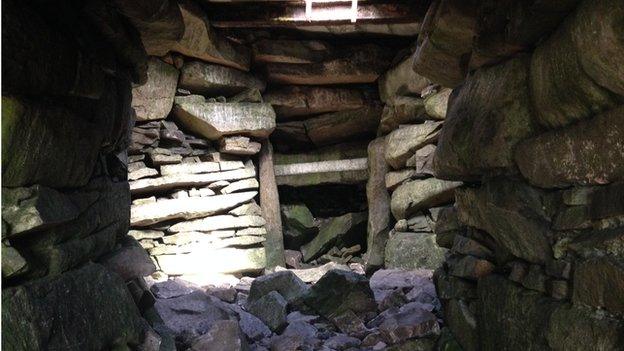
The burial chamber would have been used for the cremation of important figures of the period.
Archaeologist Martin Keery, who oversaw the work, said the Slieve Gullion passage grave was one of 190 "state-care" sites in Northern Ireland.
He praised the enthusiasm of the volunteers who climbed the mountain to help repair what is Ireland's highest passage grave.
"This is the highest mountain in this area, so this would have been a prestigious site," Mr Keery said.
He said its prominence and size meant the burial chamber would have been used for the cremation of important figures of the period.
The work was organised by the Ring of Gullion Landscape Partnership, external which was established to conserve and promote the environment in the area.
Darren Rice said the mountain was a special place to the local people.
About 30 people trekked to the top of Slieve Gullion at the weekend to help repair the cairn
"This is a gem in the crown of the Ring of Gullion," he said.
"To have such an historic monument on our doorstep is absolutely phenomenal. We have a winter solstice event here every year to celebrate this fantastic site."
He said tourism was an increasingly important part of the economy in the area.
The figures for the numbers climbing Slieve Gullion have risen from 5,000 to around 20,000 people a year.
The mountain also features prominently in Irish mythology. The legendary warrior, Cu Chulainn, is said to have been given his name there after he killed a ferocious guard dog which had attacked him.
The legend says he struck a hurling ball into its throat. He got his name when he offered to take over guard duties for the dog's owner.
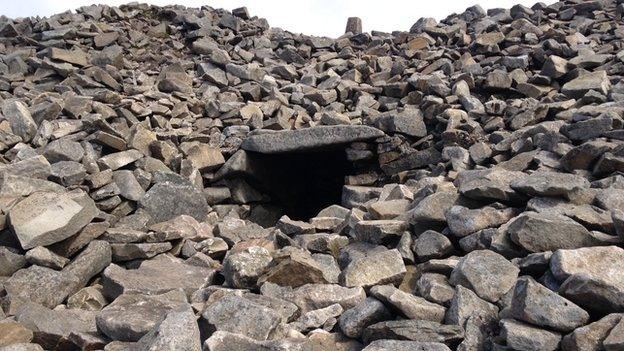
Stones had become dislodged from the top of the ancient cairn and were threatening to block the entrance to the site
- Published23 August 2014
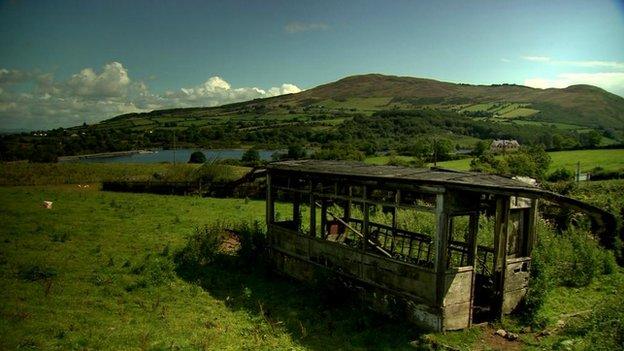
- Published23 August 2014
